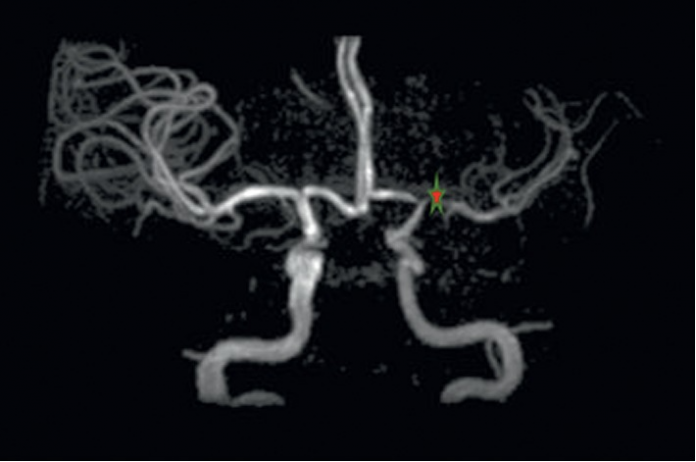
Subacute stroke secondary to Moyamoya syndrome
This article highlights the case of Moyamoya syndrome in a 28-year-old Caucasian female patient. The patient presented to the hospital with complaints of right sided facial droop, remitting slurred speech, impaired concentration and fatigue. Her medical history revealed depression and breast fibroadenoma status postresection.
3 weeks before she was admitted to the hospital, the patient presented to the emergency department having a “hard time processing thoughts”. Her neurological examination was unremarkable. The primary care physician advised a computed tomography (CT) of the head, for further evaluation which was also unremarkable. Therefore, presumed that her symptoms were because of anxiety related to a strong psychiatric component. Other symptoms included slurred speech and facial droop.
A magnetic resonance imaging (MRI) was advised, also. MRI findings showed a subacute infarct of her left middle cerebral artery. This prompted her doctor to send her to the hospital for further evaluation and management. The patient’s family history revealed that she had a grandfather who died of multiple strokes at the age of 45.
Investigations findings
Physical examination showed that the patient’s heart rate was 88 beats per minute, blood pressure 139/93, respiratory rate 15/min, temperature 98 F and pulse oxygenation 96% on ambient air. The patient’s mental status exam was remarkable for anxiety. Whereas her neurological examination showed that she had difficulty findings words and with repetition. Although, her comprehension skills were intact. Physical examination further showed a facial droop of the upper motor neuron on the right side of her face. She displayed normal muscle strength with all sensation intact in all extremities.
MRI of the head and neck showed stenosis of the left middle and anterior cerebral arteries. In addition, thrombosis of the anterior cerebral arteries. The patient’s cerebral angiogram showed high grade stenosis and delayed filling in the territory of the left middle cerebral artery. All clinical and investigations findings led to the diagnosis of Moyamoya syndrome, an arterial disorder causing stroke in the young patient. The patient was referred to neurology and she was started on treatment with statin, clopidegrol and aspirin.
She remained stable during her stay at the hospital and was discharged with follow-up for neurosurgery. Doctors advised a direct and indirect bypass of the abnormal cerebral vasculature. She also underwent rehabilitation for her physical symptoms. At follow-up the patient showed significant clinical improvement.
References
Subacute Stroke in a Young Female: A Case of Moyamoya Syndrome Initially Anchoring with Anxiety https://www.ncbi.nlm.nih.gov/pmc/articles/PMC6925758/



